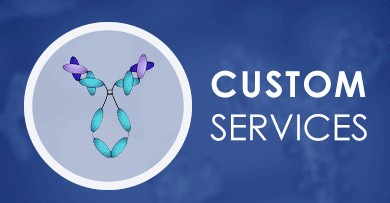+ Filter
 Loading...
Loading...

ARTN
 Loading...
Loading...Anti-ARTN Products
- Human Anti-ARTN Antibody, mRNA (TAB-055CL-mRNA)
-
- Species Reactivity: Human
-
- Species Reactivity: Human
- Type: ADCC enhanced antibody
-
- Species Reactivity: Human, Mouse, Rat
- Type: Rabbit IgG
- Application: WB, IHC-P, IP
- Mouse Anti-ARTN Recombinant Antibody; Fab Fragment (TAB-484MZ-F(E)) (TAB-484MZ-F(E))
-
- Species Reactivity: Human
- Type: Mouse Fab
- Application: ELISA
- Anti-Human ARTN Recombinant Antibody (TAB-055CL)
-
- Species Reactivity: Human
- Type: Antibody
- Mouse Anti-ARTN Recombinant Antibody; scFv Fragment (TAB-483MZ-S(P)) (TAB-483MZ-S(P))
-
- Species Reactivity: Rat
- Type: Mouse scFv
- Application: ELISA
- Mouse Anti-ARTN Recombinant Antibody; Fab Fragment (TAB-483MZ-F(E)) (TAB-483MZ-F(E))
-
- Species Reactivity: Rat
- Type: Mouse Fab
- Application: ELISA
-
- Derivation: Phage display library screening
- Species Reactivity: Mouse, Rat, Human
- Type: Rabbit IgG
- Application: WB, IHC-P, IP
- Anti-Mouse ARTN Immunohistochemistry Kit (VS-0525-XY539)
-
- Species Reactivity: Mouse
- Target: ARTN
- Application: IHC
View More Products
Can't find the products you're looking for? Try to filter in the left sidebar.Filter By Tag
More Infomation
Our customer service representatives are available 24 hours a day, from Monday to Sunday. Contact Us
For Research Use Only. Not For Clinical Use.
Background
This gene encodes a secreted ligand of the glial cell line-derived neurotrophic factor (GDNF) subfamily and TGF-beta (transforming growth factor-beta) superfamily of proteins. Ligands of this family bind various TGF-beta receptors leading to recruitment and activation of SMAD family transcription factors that regulate gene expression. The encoded preproprotein is proteolytically processed to generate each subunit of the disulfide-linked homodimer. This protein signals through the RET receptor and GFR alpha 3 coreceptor, and supports the survival of a number of peripheral neuron populations and at least one population of dopaminergic CNS neurons. This protein has also been shown to promote tumor growth, metastasis, and drug resistance in mammary carcinoma.
Predicted location
Intracellular, Secreted (different isoforms)
Single cell type specificity
Cell type enriched (Urothelial cells)
Immune cell specificity
Not detected in immune cells
Cell line specificity
Group enriched (A-431, HaCaT, HBEC3-KT, hTCEpi, hTERT-HME1)
Interaction
Homodimer; disulfide-linked. Binds to RET (By similarity).
Molecular function
Growth factor
More Types Infomation



